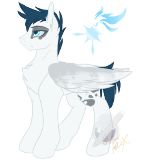Small arms of the Second World War, Part 4: Japan · 5:50am Jul 16th, 2014
This blog/list will not contain all of the weapons used by Japan, but will try to list most of those that saw widespread service during the war. Prototypes or limited service/production weapons will usually not be listed, unless I deem otherwise. This list is in no way a complete inventory of the weapons used by the Japanese military during WWII, and should not be treated as such.
Pistols:
Nambu Type 14
Caliber: 8x22mm Nambu
Action: Semi-automatic, recoil-spring
Feed System: 8 round box magazine
It is highly probable that the Nambu pistol design was highly influenced by the Mauser C96, after a Japanese commission toured Europe to see recent developments. Models made before the war were of high quality make, while quality increasingly fell as the war progressed. Despite the lower quality of later models, they were still quite functional.
Nambu Type 94
Caliber: 8x22mm Nambu
Action: Semi-auto, recoil operated
Feed system: 6 round box magazine
The Type 94 was considered to be a poor design. It was difficult to strip for cleaning, could unintentionally fire, had misaligned sights, and could be difficult to reload. Nevertheless, it was liked for its smaller size and grip.
Type 26
Caliber: 9mm Japanese revolver
Action: Double-action revolver
Feed System: 6 round rotating cylinder
The Type 26 was the first modern handgun adopted by the Japanese military. It is a hammerless revolver and it had its own unique ammunition. The cylinder contains a serious design flaw, with it only notching while the hammer is cocked. This allows the cylinder to revolve freely by being brushed against an object or the inertia from a sudden sideways motion. Needless to say, this flaw could be fatal in combat. Semi-auto pistols such as the Nambu, replaced the Type 26 in service.
Rifles:
Arisaka (Numerous variants)
Caliber: multiple variants of 6.5x50mmSR and 7.7x58mm
Action: Bolt-action
Feed System: 5 round internal magazine, usually charged with stripper clips
The Arisaka family of rifles served as the main rifles of the Imperial Japanese military from 1897-1945. Numerous variants with many different calibers were developed over time. The Type 99 with its specific 7.7x58mm cartridge was comparably powerful with a modern .308 round. During destructive tests, the Arisakas were shown to be stronger than the M1903 Springfield, Lee-Enfield, and Mauser rifles.
Type 4/5 
Caliber: 7.7x58mm Arisaka
Action: Semi-auto, gas-operated
Feed System: 10 round internal magazine, charged by two 5 round stripper clips
The Type 4 was an experimental Japanese rifle. It was effectively a copy of the M1 Garand rechambered in 7.7x58mm Arisaka. This rifle never saw service, and only about 250 were completed. It suffered feeding and jamming problems, which slowed its testing. An example of this rifle can be viewed in the US National Firearms Museum, under the World War II section.
Sub-machineguns:
Type 100
Caliber: 8x22mm Nambu
Action: Full-auto, blowback
Feed System: 30 round detachable curved box magazine
RoF: 450-800 rpm
The Type 100 was fed from the side, and had poor weapon balance as a result. Its 8mm round was underpowered, but late-war simplified variants had the fire rate bumped up to 800 rpm. The weapon was light, decently reliable, and accurate enough for close range combat. Its sights were canted towards the left.
Machineguns:
Type 96
Caliber: 6.5x50mm Arisaka
Action: Full-auto only, gas-operated
Feed System: 30 round detachable box magazine
RoF: 450-500 rpm
Being a redesign of the Type 11 light machinegun, the Type 96 was more reliable yet fired the same round. The weapon had a finned barrel, that could be changed quickly to avoid overheating. It was regarded as being rugged and reliable, even though its cartridge lacked penetration against cover.
Type 99
Caliber: 7.7x58mm Arisaka
Action: Full-auto, gas-operated
Feed System: 30 round detachable box magazine
RoF: 700 rpm
The Type 99 was very similar to the Type 96. It shared many features from the previous light machinegun, and even shared some parts. Improvements were made in this design, making the weapon the most reliable of the light machineguns. It served alongside the Type 11 and Type 96 light machineguns until the end of the war. A paratrooper variant of this weapon was also made.
Type 92
Caliber: 7.7x58mm Type 92
Action: Full-auto, gas-operated
Feed System: 30 round Hotchkiss-type metal strips
RoF: 450 rpm
Nicknamed the woodpecker by Allied troops due to its distinctive firing sound, the Type 92 was the primary heavy machinegun of the Imperial Japanese army. It was intended to be fixed on a tripod and operated by three men. It was sometimes used as a light AA gun.
Anti-tank and other:
Type 97 automatic cannon
Caliber: 20x125mm
Action: Semi-auto, gas-operated
Feed System: 7 round detachable box magazine
It was semi-automatic, which gave it a high rate of fire. Unfortunately, the recoil from the large round was very violent. The gun could be fitted with a protective shield, pushing the total weight up to 150 lbs. It could penetrate 30mm of armor at 90 degrees from a range of 250 meters.
Type93/Type100 flamethrower
Capacity: 3.25 gallons
Range: 30 yards
Burn time: 10-12 seconds
Developed in response to fortifications built during WW I, these flamethrowers were designed to attack pillboxes and the like. They were primarily used early in the war, as they had little defensive use late-war. Although, the Japanese army attempted to use the flamethrower as an anti-tank weapon late in the war, due to a lack of proper anti-tank weapons. They had some success.





This website is for ponies and poorly written clopfics.
2291829 And apparently, bad Shrek in Equestrian trollfics.
2293169 Quite you!
Why is the anti-tank gun have automatic in it's name? It can't be automatic if it's a semi-auto.
2293654 Ask the weapon designers.